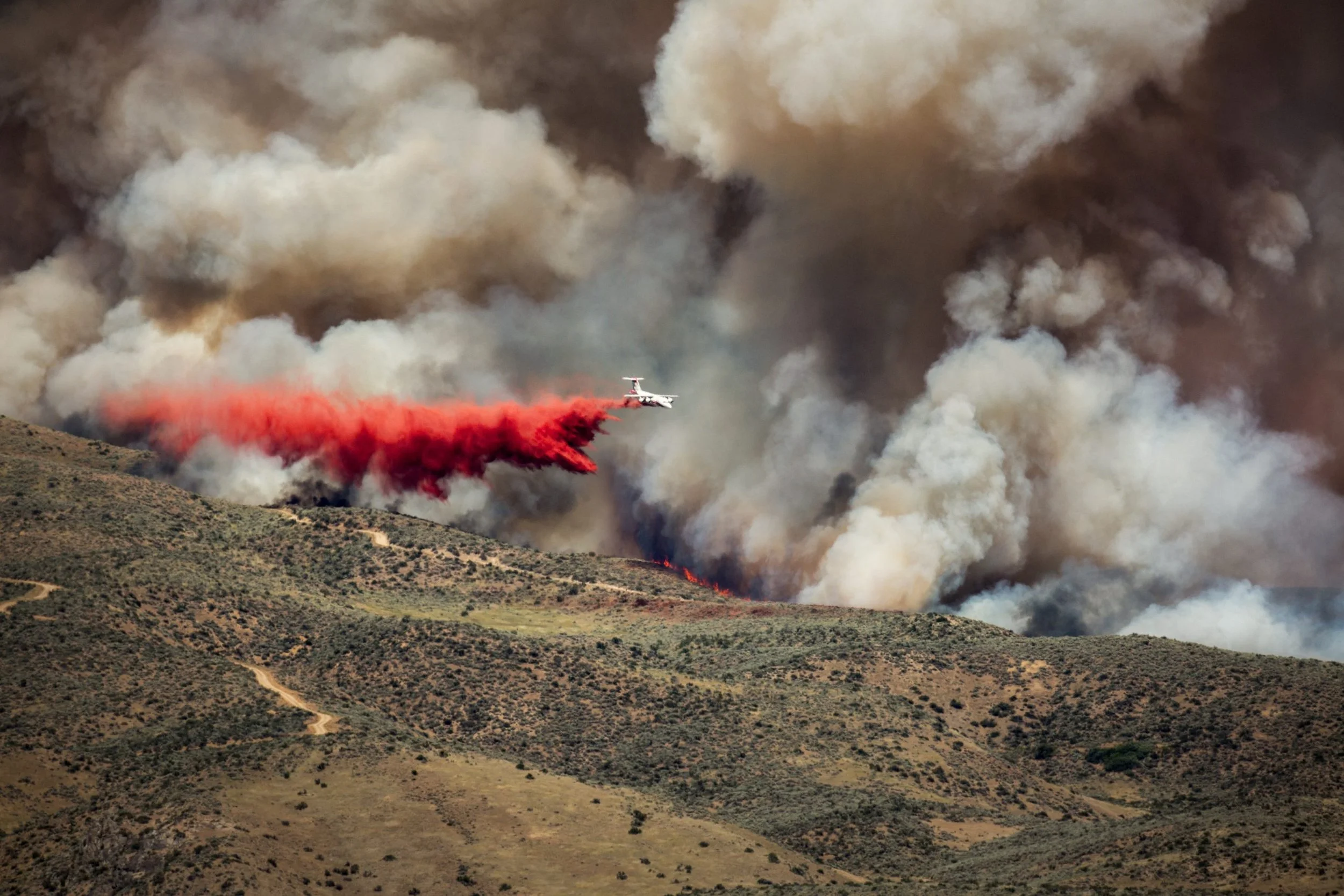It’s fire season in Idaho and changes are in store. Are you ready?
Summer Solstice has come and gone, Idaho’s mountain snow is melting, and grass and brush have responded almost too well to the mild temperatures and consistent spring moisture. We’ve already seen smoke from early fires in Northern Alberta, but nothing like the East Coast that experienced heavy smoke pouring down from fires in Quebec. And air tankers recently doused three human-caused fires near Boise.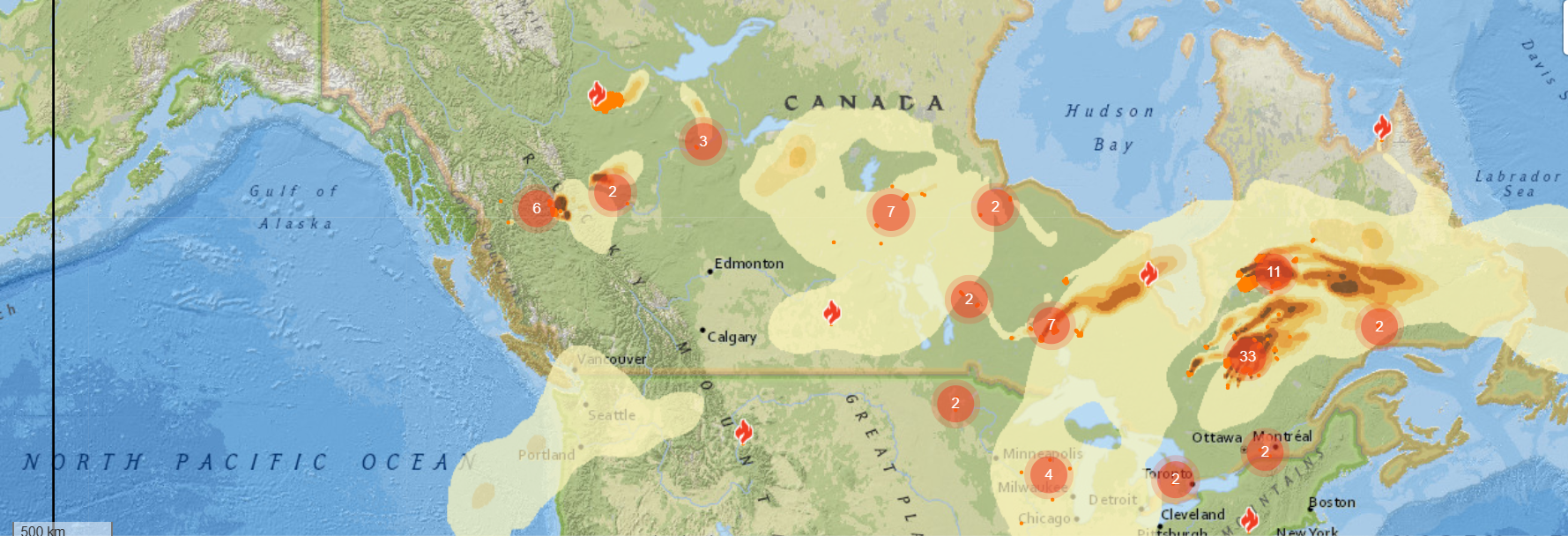 Across Idaho, new tools and agreements will be in place this year, as the state, federal government, cities, local districts, and volunteers all work together to prevent fires from starting, and protect communities and values when they inevitably do.It's important to note that fires are essential to the function and development of many of Idaho’s forests and grasslands, but too much fire, or fire in the wrong place, can present challenges. Last year, 349 wildfires impacted 410,000 acres in Idaho. After having visited some of these fires on the ground this spring, I was struck by the variability in fire effects.On the Four Corners Fire which affected 14,000 acres near Cascade, 2% of the fire burned at high intensity with 54% classified as low or unburned. The Moose Fire, Idaho’s largest in 2022, impacted 142,000 acres after a camper left a campfire unattended. After the embers cooled, it was determined that the Moose Fire burned 10% of the fire area at high intensity, leaving 58% lightly burned or unaffected by the flames.
Across Idaho, new tools and agreements will be in place this year, as the state, federal government, cities, local districts, and volunteers all work together to prevent fires from starting, and protect communities and values when they inevitably do.It's important to note that fires are essential to the function and development of many of Idaho’s forests and grasslands, but too much fire, or fire in the wrong place, can present challenges. Last year, 349 wildfires impacted 410,000 acres in Idaho. After having visited some of these fires on the ground this spring, I was struck by the variability in fire effects.On the Four Corners Fire which affected 14,000 acres near Cascade, 2% of the fire burned at high intensity with 54% classified as low or unburned. The Moose Fire, Idaho’s largest in 2022, impacted 142,000 acres after a camper left a campfire unattended. After the embers cooled, it was determined that the Moose Fire burned 10% of the fire area at high intensity, leaving 58% lightly burned or unaffected by the flames.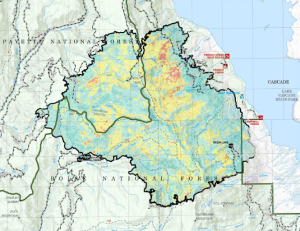
A new agreement for Idaho
Every 5 years, the federal government, which administers 60% of the lands in the state, negotiates an agreement with the State of Idaho, referred to as the Fire Offset Agreement. With federally-managed public lands intermingled with state and private lands, federal land managers and the state effectively swap protection responsibilities for different acres (i.e. Idaho agrees to protect a certain 5,000 acres of national forestlands, in exchange for Forest Service protection for 5,000 acres of state endowment lands…although it’s a lot more complex than that given topography, accessibility, fire regime, fuel type, and other factors). The new agreement has the state protecting approximately 439,000 additional acres of Wildland-Urban Interface (WUI) areas, where homes are intermingled with fire-prone forests, which were previously protected by the Forest Service. Due to the complexity of managing fires in these populated areas, costs and risks to firefighters are heightened. And given the impact of climate change, which is leading to longer, more challenging fire seasons, we have consistently seen costs to states grow in recent history (see studies from University of Idaho and Pew). Much of the added acreage is in North Idaho, around the communities of Coeur d’Alene, Priest River, and St. Maries, along with some additional acreage east of Cascade and Garden Valley.While existing agreements provide for the nearest available resources and support from local, federal, state, and private fire departments, it does mean that the cost of these fires will be borne by Idaho taxpayers instead of the U.S. Treasury.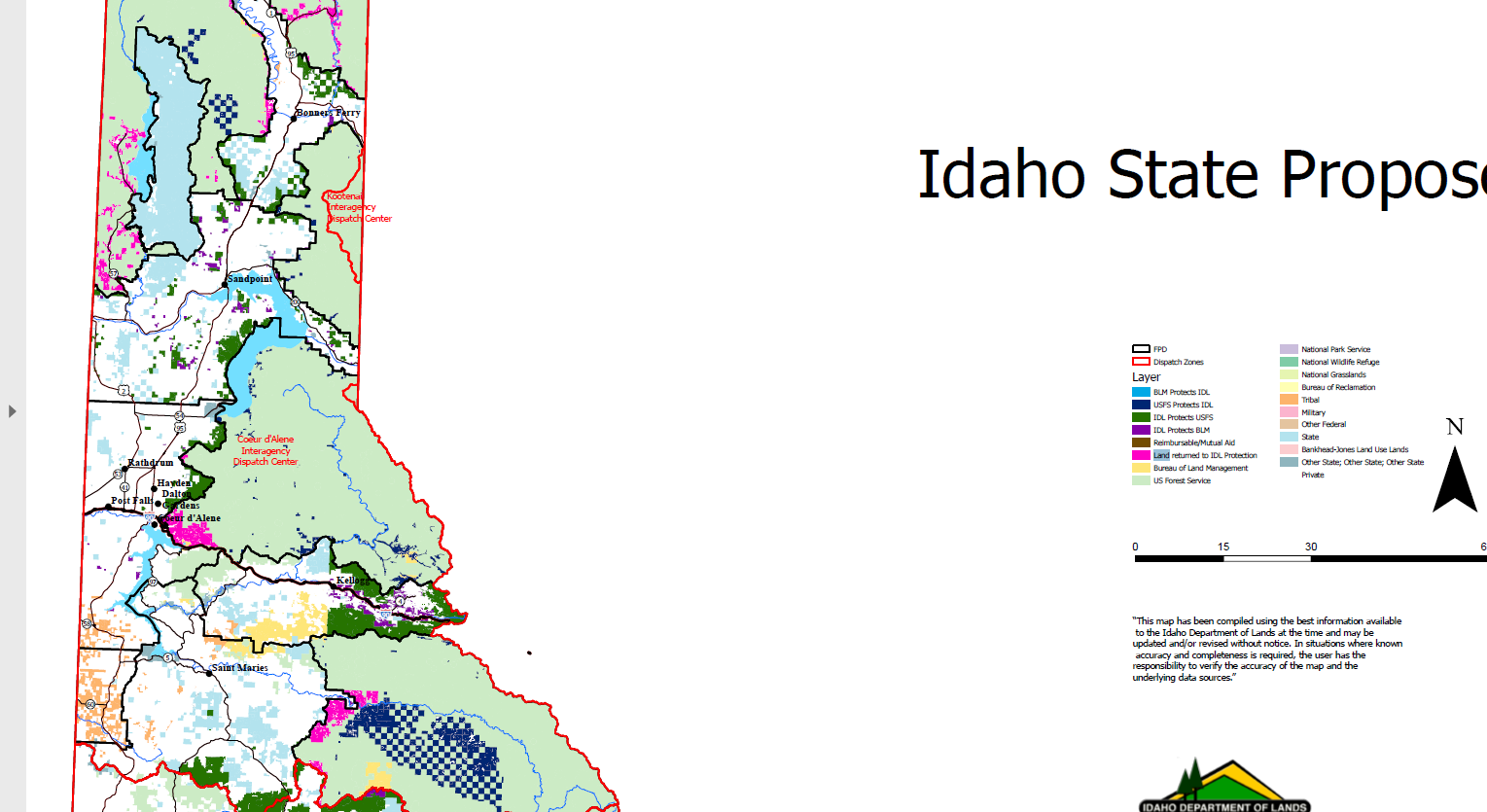
What are the implications of the new agreement?
As Nicole Blanchard from the Idaho Statesman found in a comprehensive story on the Idaho Fire Offset Agreement, the costs to the state are expected to rise with these new responsibilities, especially when coupled with the increase in acres burned associated with climate change. This begs the question of whether the state and local governments can do more with regards to better planning for community protection, encouraging fire-safe building codes, and ensuring that firefighters have safe access to both water supplies and the communities they serve. Current statewide building codes in Idaho ignore the very real risks associated with wildfires, and in many parts of the state (including Kootenai, Bonner, and Benewah Counties, where the majority Idaho’s new protection areas are located), few zoning ordinances limit where and how homes can be built in these fire-prone landscapes.The Idaho Legislature could also do more to fund fire prevention and education efforts, and promote local collaborative efforts focused on community protection, fuels reduction, restoration efforts, and cooperative management. The state has made use of the Good Neighbor Authority and Shared Stewardship Agreements, which can help facilitate projects on Forest Service and Bureau of Land Management lands, however there have been concerns that the focus has been on commercial timber sales, instead of less commercially-viable fuels reduction and prescribed burning needed.On the federal side, through Inflation Reduction Act and Bipartisan Infrastructure Law investments, billions of dollars are flowing to the Forest Service and Department of Interior to reduce fire risk across public lands. The Forest Service developed a Wildfire Crisis Strategy, designating two large landscapes in Idaho: Southwest Idaho (including portions of the Boise and Payette National Forests) and the Nez Perce-Clearwater-Lower Salmon (including much of the Nez Perce-Clearwater National Forests in North-Central Idaho, surrounding the communities of Riggins, Elk City, and Lowell). Together these landscapes cover over 3.2 million acres and are targeted for over 110,000 acres of fuels reduction, with an estimated 80% of those acres treated through prescribed fire over the next 3-5 years.
So, what’s the outlook for this summer?
With robust growth following a cool, wet spring, fire experts expect a later-than-normal start to the season. The decent snowpack and regular rains mean one of two things: either we’ll have a mild fire season, or we’ll have a wild one with increased grasses and underbrush fueling more intense blazes.The deciding factor will be whether we see significant dry lightning storms pass over the state from late-July through September, when forests and grasslands are driest. Historically, lightning caused the majority of wildfires in Idaho, representing about 75% of fire starts. In recent years, human-caused fires have trended upward and represented about 50% of fires in 2022. That means fire prevention and awareness can make a real difference, and we all have a role to play ensuring that carelessness doesn’t contribute to the already heavy workload for our firefighters. We all have a responsibility to ensure that campfires are dead out, avoid driving and parking in dry grass, and follow burn restrictions and requirements, to name a few. Still, even if humans didn’t start a single fire in 2023, we know that fires are inevitable. In much of Idaho’s backcountry, these fires can be safely managed under mild conditions, and can help limit the spread of future fires. In numerous cases, we’ve seen active fires burn into old fire scars and drop to the ground, allowing firefighters to gain the upper hand. On the other hand, in severe drought conditions, coupled with high winds and continuous fuels, wildfires often exceed the capacity of even the most strenuous ground and aerial firefighting efforts, and await the snow and rain in October or November to douse the flame. In the end, Idaho is a fire-adapted environment, and it’s not a matter of if a fire will break out, but when.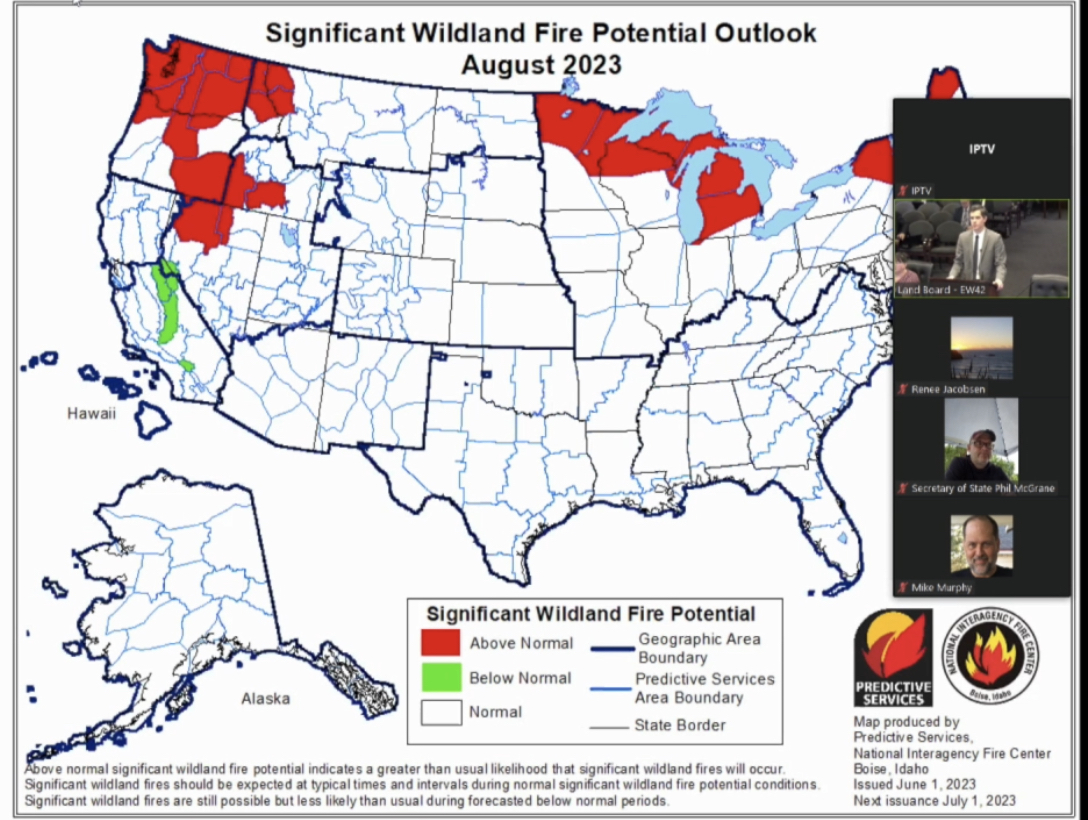
Are you prepared?
Just as we can expect snow and cold in the winter, we can count on wildfires to impact our forests and grasslands in Idaho. For those who live in fire-prone areas of Idaho (that’s most of us!) there are simple steps we can take to limit potential loss:
- Cut and trim brush and vegetation within 100 feet of your home,
- Move firewood away from your home,
- Cover any exposed soffits, decks, or other gaps where embers can land,
- Use fire-resistant building materials for your roof, siding, and decks, and
- Keep gutters, siding, and landscaping free of pine needles, leaves, grasses, and other “fine fuels.”
Check out Firewise USA for more links and tips on creating a Firewise plan for your home or property. Even for those who don’t live in fire-prone environments we can all practice fire safety: ensuring campfires are fully extinguished (cool to the touch!), following fire restrictions and rules, practicing vehicle safety and not parking on dry grass, checking weather and drought conditions where we go, and foregoing the desire to light off aerial fireworks to celebrate Independence Day. Being fire-aware not only helps protect public lands we know and love, but also our communities and firefighters. For more tips on wildfires, responsible recreation, and all things Idaho public lands – sign up for our ICL Public Lands Campaign email updates!

